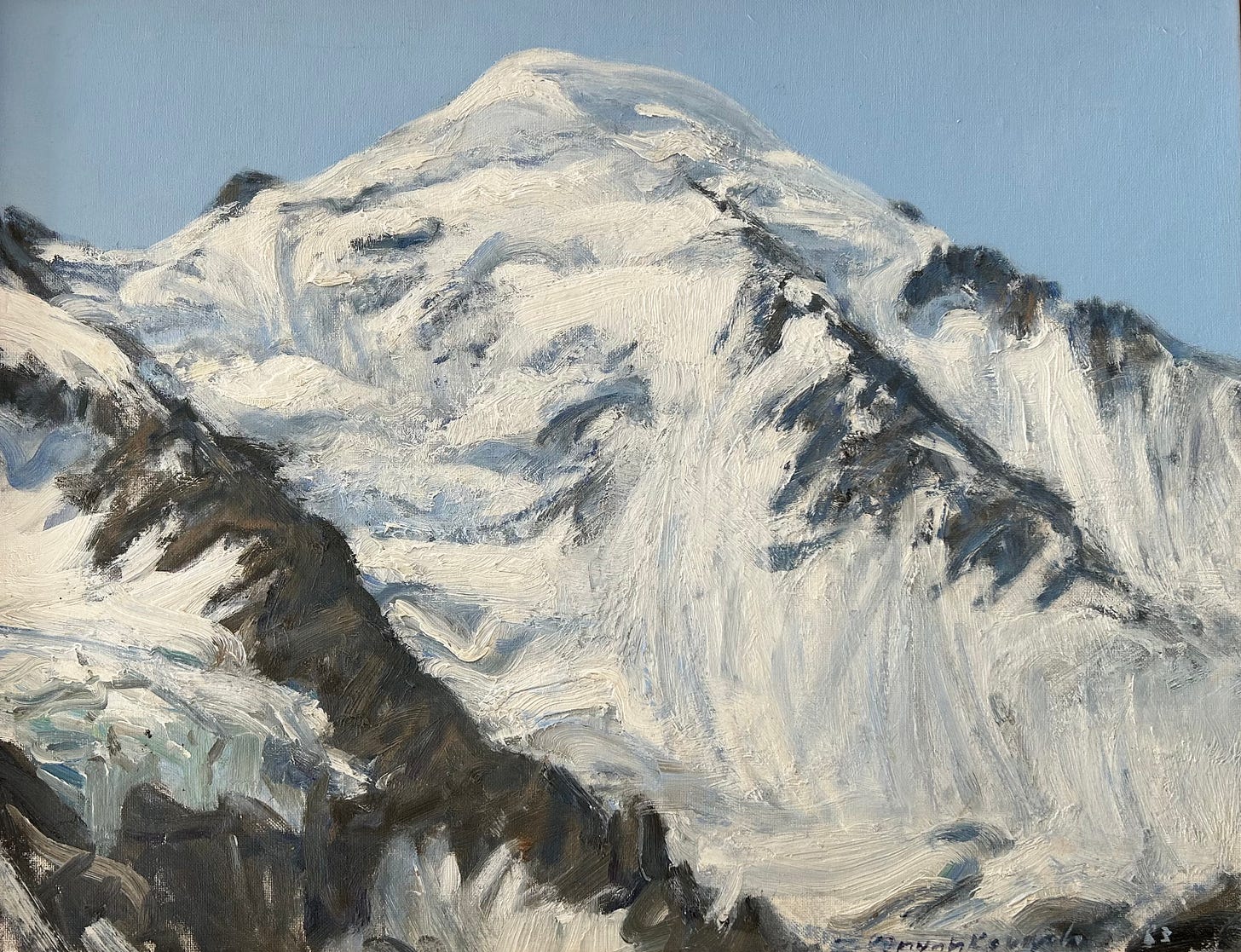In recent weeks, I’ve written about failure, false urgencies, and what it means to compost a collapsing world. This time, I want to tell you a story. Not a metaphor or thought experiment, but something real. Three places, three moments, three scars in the mountains. If you've been following Composting Yesterday’s World, this may feel like another step in the same journey—but this time, we’re walking on alpine ground that is literally falling away.
At 15:30 on May 28, 2025, in the Lötschental valley of the Swiss Alps, the glacier above Blatten collapsed. Millions of tonnes of ice, rock, and mud surged down the mountainside, burying the village. The Birch Glacier, already destabilized by years of warming, had been overloaded by falling rock from the Kleine Nesthorn, its north face weakened by thawing permafrost. For days, the mountain had been trembling. On May 18, authorities began round-the-clock monitoring and eventually ordered the evacuation of the village. It wasn’t enough to stop the destruction but it most definitely saved lives.
Blatten was founded in 1433. It sits high and remote, far from the flows of mass tourism. About 300 people lived there, among old wooden houses, steep fields, and deep snow. It was known for the eerie winter carnival of Tschäggättä, where masked villagers roamed the streets like mountain spirits in disguise. And it was also a destination for mountaineers. In the 1980s, I ended a beautiful ski touring week in the Berner Oberland with my mother by summiting the Ebnefluh (3960 m) and descending all the way to the bus stop in Blatten, an epic run of nearly 2500 meters of vertical drop. Now the village is gone. What remains is a cone of debris and silence and a growing lake where the river Lonza is dammed by the rubble. Will there be a second catastrophe if the natural dam breaks?
This is not an isolated event. The Alps are crumbling.
In June 2024, in the French Alps, the hamlet of La Bérarde was swept away by a violent flash flood. It came from a supraglacial lake high above, long known to researchers, but poorly monitored. A sudden drainage, likely triggered by heat and rain, surged down the valley. No one died (that village had also been evacuated) but homes, history, and a 17th-century chapel vanished into the torrent. I spent many weeks in that part of the Alps in the 1980s since the French Alpine Club ran a training camp in the hamlet (I was an instructor at another of their youth camps nearby).
Further south, in the Roya Valley near the Mediterranean, storm Alex brought 663 mm of rain in just 24 hours in October 2020. The resulting flood destroyed bridges, roads, railroads and entire communities. Ten people died. Dozens disappeared. A large retirement home in the town of Tende had to be evacuated. A personal connection there too: my father-in-law spent several months in that home a decade ago.
These are not scenes from a distant future. They are not warnings. They are evidence that the Alps, once seen as eternal and protective, are unraveling. Glaciers that used to move slowly are now melting at breakneck speed, surging or collapsing outright. Permafrost, the invisible glue of high mountains, is thawing. Once-in-a-millennium events seem to arrive every few years.The earth no longer holds. Villages vanish, not metaphorically, but literally.
Of course, this is happening with even more devastating consequences in the Himalayas (in Nepal, India, China, Pakistan) and in the Andes, and in just about every other high mountain range. But the Alps feel so distinctly personal to me. It’s the playgrounds of my Alpine childhood that are disappearing. It’s memories and mental photographs, carved deep into my mind. And it’s so incredibly sad.
What strikes me most is not just the force of these collapses, but their clarity. You can’t really say they’re caused by political indifference or corporate lobbying. They aren’t symbolic failures of the system. They are the system’s real effects, playing out in real time. And we humans, or at least those of us who’ve emitted the gigatons of CO₂ that are driving the climate crisis, are failing the mountains, just as we are failing future generations and the more-than-human world.
Some Indigenous cultures have long understood this. In Aotearoa New Zealand, the Māori concept of kaitiakitanga frames humans as guardians of land, sea, and sky. Not owners, not conquerors. I’ve just started reading Jacinda Ardern’s memoir, where she speaks about how kaitiakitanga underpins her commitment to climate action. We humans are, in the words of Tyson Yunkaporta in his fantastic book Sand Talk, the custodial species. Our job is not to dominate, but to tend, to listen when the land speaks.
And the land is speaking now, with a force we can no longer ignore.
In past posts, I’ve written about how the dominant system clings to control, rushes into techno-fixes, and rebrands panic as progress. But here, speed is irrelevant. The question is: how do we respond when the mountains fall?
Yes, we protect what can still be saved. We adapt. We build barriers. We move houses and cities. But more importantly, we grieve. We stop pretending the old maps will guide us. We try to hear what the Earth is telling us. And maybe, just maybe, we begin to walk a little slower, with less certainty and more care.
What will the summer of 2025 bring? I don’t know. But I am bracing for more loss. And I am trying to learn how to listen.





Earth Grief.